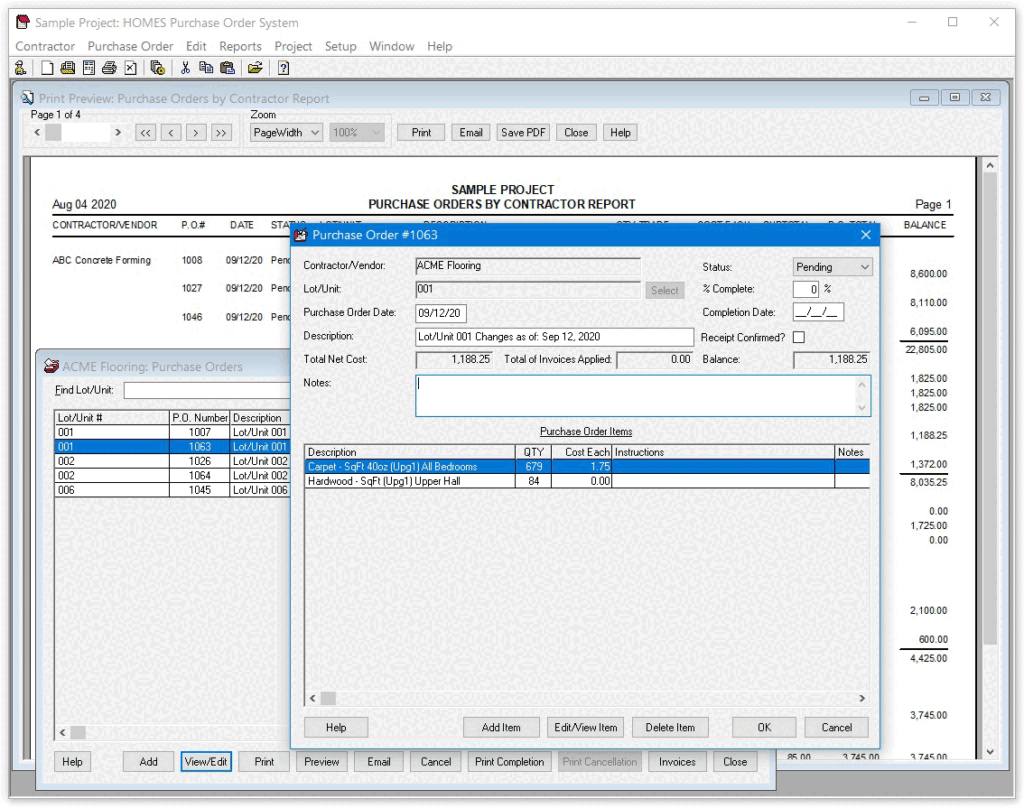In today’s fast-paced business environment, effective procurement management is essential for maintaining
competitiveness and achieving operational efficiency. However, many organisations struggle with manual,
paper-based procurement processes that are prone to errors, delays, and inefficiencies. Fortunately, the advent
of Online Purchase Order Systems (PO systems) offers a solution to streamline procurement processes and bring
clarity to the chaos.
Streamlining Procurement Processes
One of the primary benefits of online purchase order systems is their ability to streamline procurement
processes. Traditionally, procurement involved manual paperwork, lengthy approval cycles, and a lack of
visibility into spending. However, with PO software, organisations can digitise and automate these processes,
reducing the time and effort required to create, approve, and manage purchase orders.
PO software allows for the electronic creation and submission of purchase orders, automates approval workflows,
and provides real-time tracking of orders. This not only accelerates the procurement cycle but also minimises
errors and ensures compliance with purchasing policies. By streamlining procurement processes, organisations can
achieve significant time and cost savings.
Moreover, online purchase order systems offer customisation options, allowing organisations to tailor the
software to their specific procurement needs. Whether it’s configuring approval workflows, setting up
notifications, or integrating with existing ERP systems, PO software can be customised to fit the unique
requirements of each organisation, further enhancing efficiency and effectiveness.
Improving Visibility and Control
Another key advantage of online purchase order systems is the improved visibility and control they provide over
procurement activities. With traditional procurement methods, it can be challenging for organisations to track
spending, monitor order status, and enforce purchasing policies.
However, PO software offers real-time visibility into procurement data, allowing organisations to monitor
spending, track orders, and identify potential bottlenecks. Additionally, built-in reporting and analytics
capabilities enable stakeholders to gain insights into procurement performance and make informed decisions.
By gaining better visibility and control over procurement activities, organisations can identify opportunities
for cost savings, negotiate better terms with suppliers, and mitigate risks associated with non-compliance or
inefficiencies.
To learn more about how online purchase order systems can bring clarity to your procurement processes and transform your business, visit cloudb2b.co.uk.
Enhancing Collaboration and Communication
Effective collaboration and communication are essential for successful procurement outcomes. Online purchase
order systems facilitate collaboration between different stakeholders involved in the procurement process,
including buyers, suppliers, and finance teams.
PO software provides a centralised platform where stakeholders can collaborate on purchase orders, share
documents and information, and communicate in real-time. This transparency and collaboration streamline
decision-making processes and ensure that everyone is on the same page.
Moreover, online purchase order systems often include features such as supplier portals, where vendors can
access relevant information, submit quotes, and track orders. This enhances supplier collaboration and
strengthens relationships, leading to better outcomes for both parties.
Conclusion
Transitioning from chaotic, manual procurement processes to streamlined, automated workflows is essential for
modern businesses looking to stay competitive. Online purchase order systems offer a solution to simplify
procurement processes, improve visibility and control, and enhance collaboration and communication.
By leveraging the capabilities of PO software, organisations can achieve greater efficiency, reduce costs, and
drive strategic value across the procurement function.

